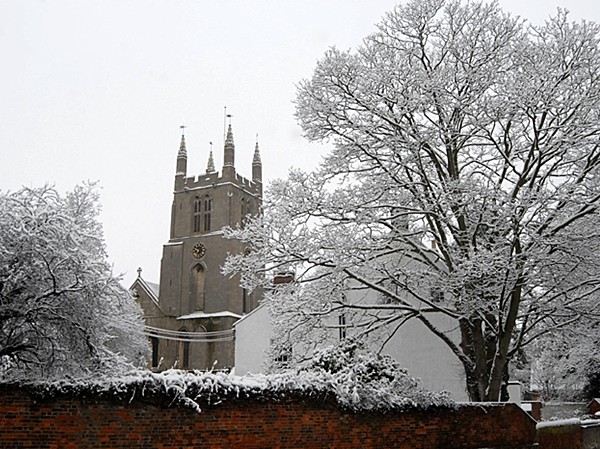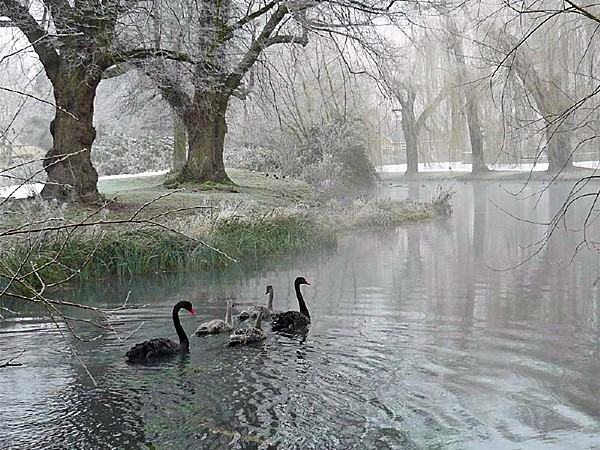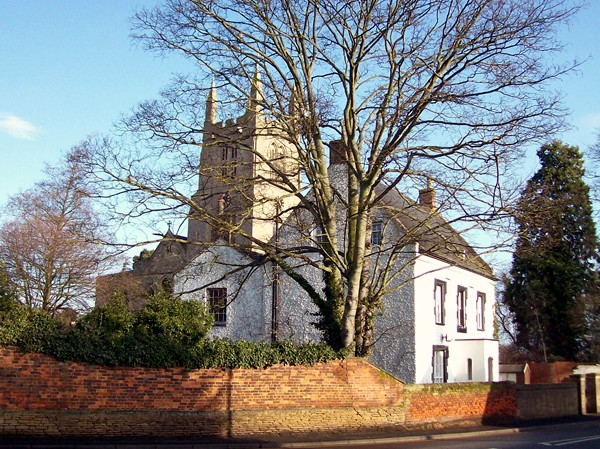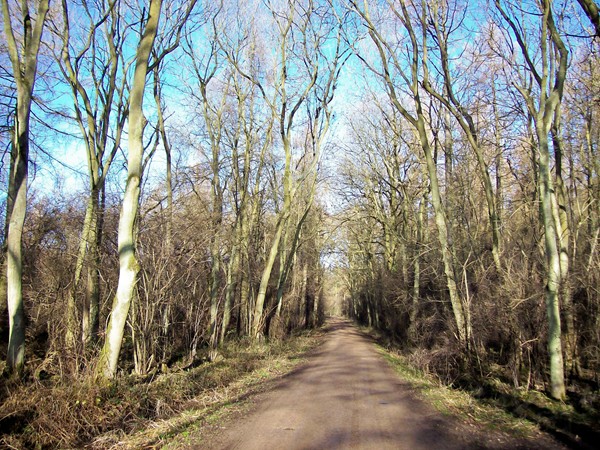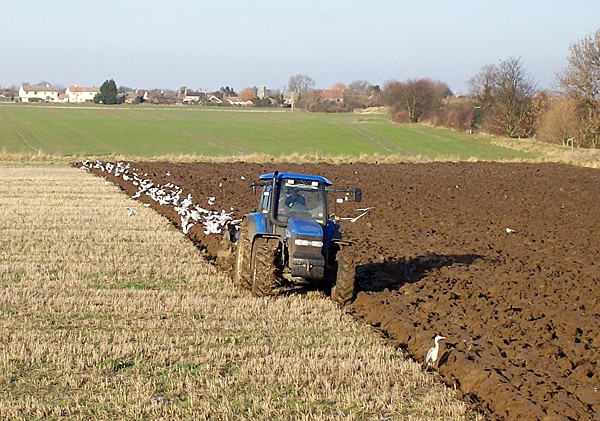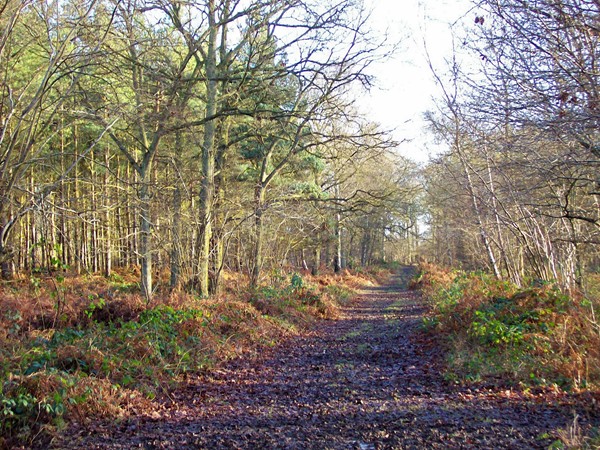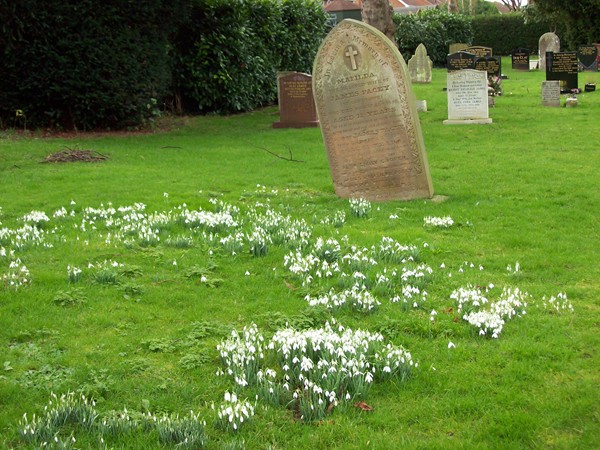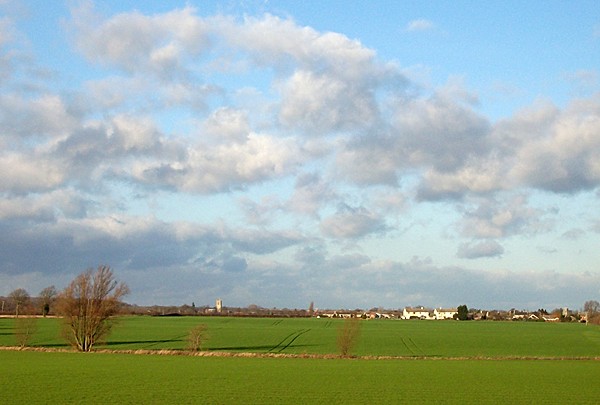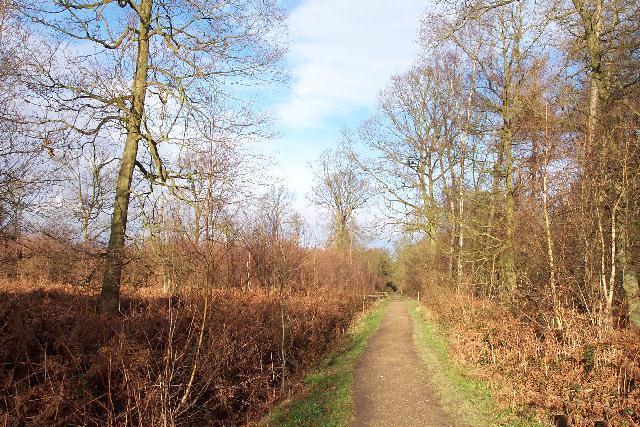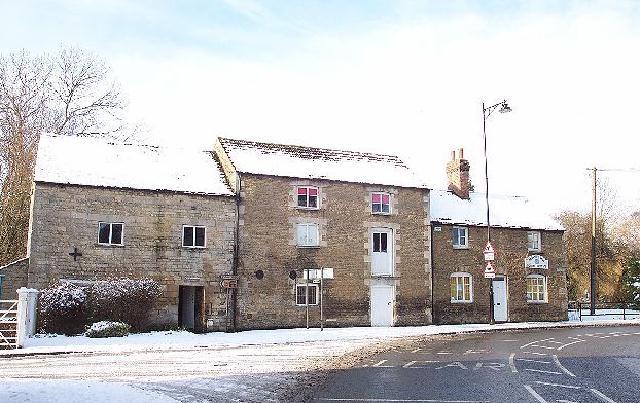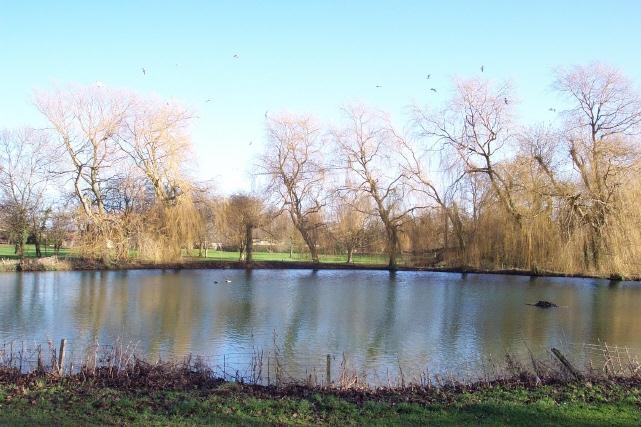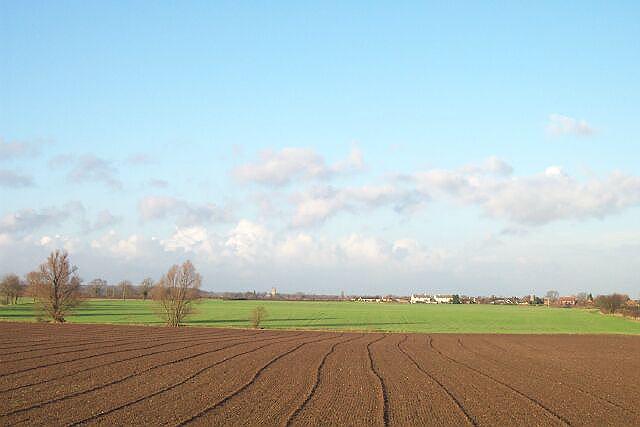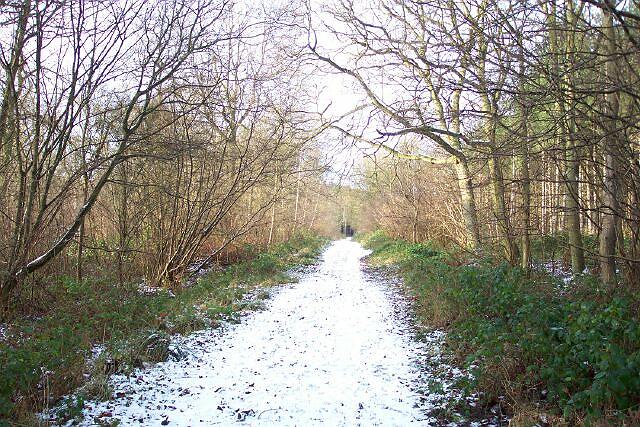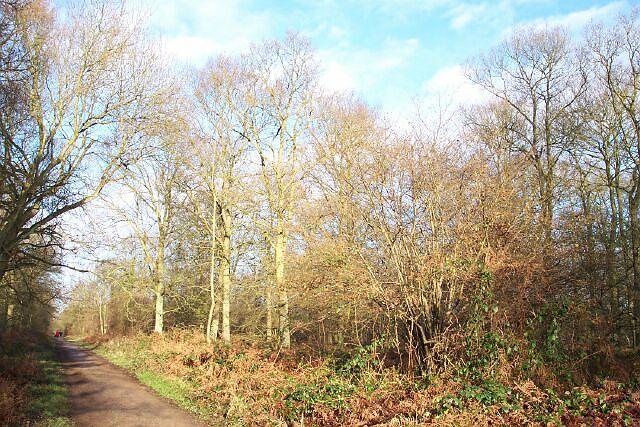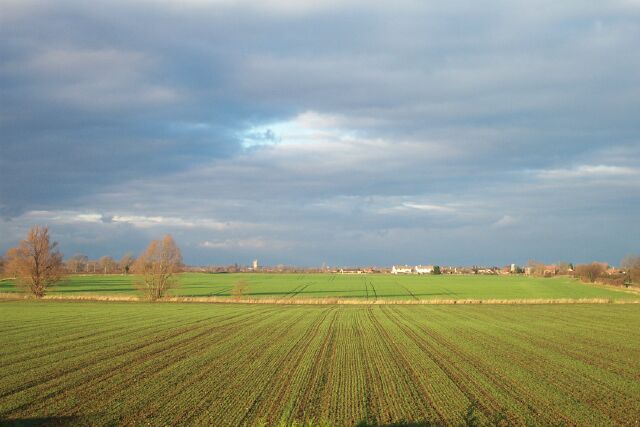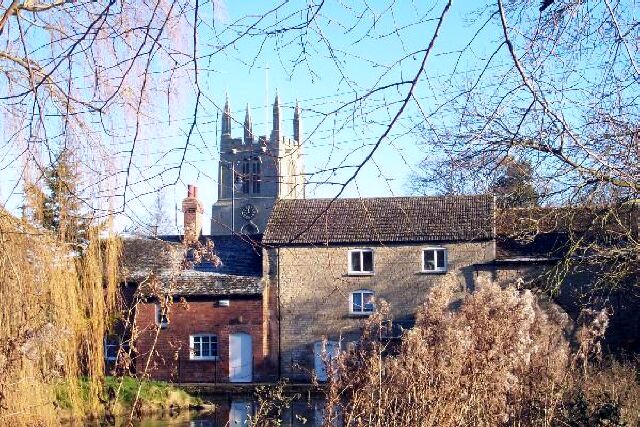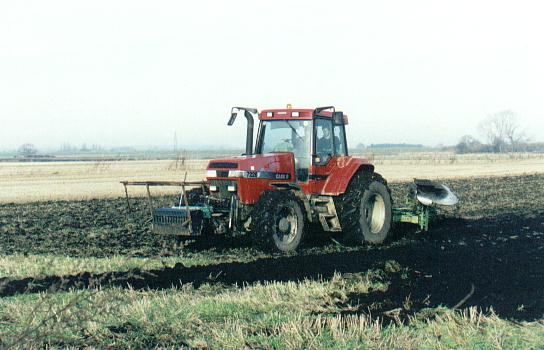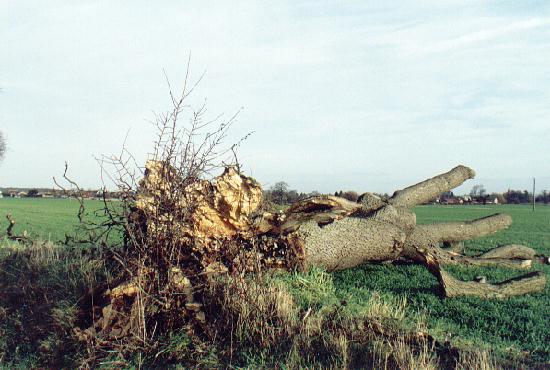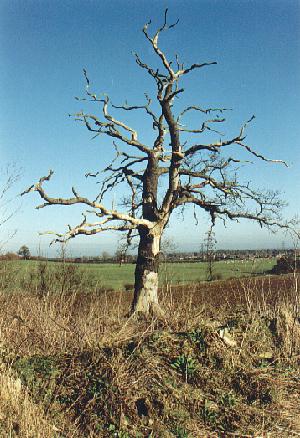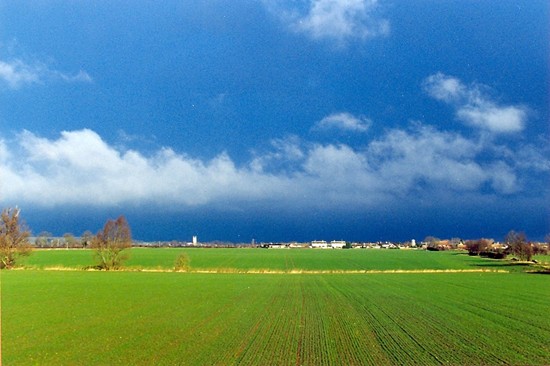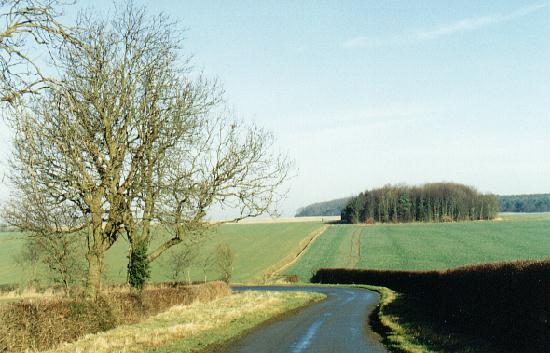|
January
Monday 21st January 2013: Snow and sub-zero temperatures arrived this week, turning the urban landscape into a winter wonderland that remained frozen in time for several days. These extreme conditions also produced some startling effects in our streets and although hazardous underfoot, the trees and shrubs at the roadside have taken on a magical appearance that persisted until the sun broke through, providing some beautiful scenes for photographers, such as here in South Street where this seasonal whiteness accentuates the mellow and ancient stonework of the 12th century Abbey Church.
Tuesday 15th January 2013: Sub-zero temperatures have resulted in freezing conditions around Bourne in recent days while the trees and grass have been covered in a white frost that has not started to thaw even on those rare occasions when the sun broke through, bringing a wintry appearance to the countryside. Here on the Bourne Eau in South Street, our two black swans and their three cygnets continue their daily routine whatever the weather and this scene is a reminder of the extreme cold they have been experiencing. f Monday 18th January 2010: The Abbey Church is mostly hidden from South Street by Brook Lodge, once the vicarage but much altered since and now converted into flats and bed-sitters, a transformation that does not enhance this part of the town. Yet the juxtaposition of the two is a delight on winter days when the bright midday sunshine shows both buildings at their best, the mellow stonework from the 12th century and the white plastered frontage from 600 years later, while the red brick wall from an even later period adds a touch of colour to a winter scene.
Wednesday 21st January 2009: For those who think that our birds fall silent in the winter months, then a walk in Bourne Wood will soon change their opinion for this morning the air was full of their song, Frost and snow does tend to drive them to pastures new but today there were plenty about up there in the tree tops already practising for the coming spring, the loudest of them the great tits whose cries carry on cold mornings when the air is still while blackbirds were scuffling about the undergrowth for grubs and berries. The woodland does take on a stark appearance in these January days but stepping out briskly along the deserted paths is invigorating and a reminder of more pleasant days ahead.
Tuesday 6th January 2009: Seagulls seem to have a semaphore system of alerting each other whenever a tasty meal of grubs and worms is available from winter ploughing for hardly had the first furrow been turned on this field between Bourne and Dyke village than a flock of them had arrived to start feeding. They were closely followed by a dozen or so pied wagtails and even an odd magpie but the most surprising visitor was a grey heron which stayed around for an hour or more to enjoy the feast but always keeping its own company, flitting backwards and forwards as the tractor drove past, a solitary and stately bird but one never to miss a free meal.
Wednesday 9th January 2008: It is often damp and dirty underfoot at this time of the year but Bourne Wood remains an exhilarating place to walk with much to see and even a glimpse of wildlife such as squirrels, foxes and perhaps deer if you are lucky. It is best to keep to the main paths after periods of heavy rain because those through the deeper parts of the forest can become hard to negotiate despite being covered with a layer of oak leaves, and are sometimes ankle deep in mud, but there is often a seat ahead for a short rest to regain your breath for the last stretch. These 400 acres of woodland are a valuable amenity for this town and it is well worth coming to live here just to enjoy them.
Wednesday 31st January 2007: Amid the dead from this town springs new life as snowdrops colonise the ground around their last resting place. They are also known as Candlemas Bells because they are in flower by Candlemas Day on February 2nd and patches of them can be found in the town cemetery at Bourne where conditions are conducive to their growth and so they soon spread beneath the trees and between graves. Here, large patches have taken over on the plot occupied by James Pacey of Cawthorpe, who died on 7th April 1903, aged 77, and his beloved wife Matilda, who had predeceased him, passing away on 23rd August 1898. Both are now long forgotten and the delicate flowers that bloom there serve as a reminder of the fragile hold we all have on life.
Wednesday 10th January 2007: There are those who love the mountains and those who delight in the lowlands but the magical skies that appear over the South Lincolnshire fens have an appeal all of their own because they give an uninterrupted 360 degree panoramic view of the horizon and the cloud pattern is forever changing. This is the view from my study window, a photograph taken without even moving from my desk, showing the village of Dyke with its whitewashed cottages, the parish church at Morton three miles hence and beyond that the tower of St Andrew's at Rippingale. Above them all is the sky, fast moving with scudding clouds on a breezy day, still and blue when the weather is hot and it is this free show laid on by nature that makes living in the fens such a delight.
Monday 3rd January 2005: Winter does little to spoil the enjoyment of woodland walkers for despite the chill in the air, there is plenty to see and on sunny days, the bracken and undergrowth still cling to their autumn colours. The numbers visiting Bourne Wood always increase whenever there is a public holiday and the past two weeks have been no exception with dozens of people stepping out along the main paths, elderly men and women, young couples, family groups with children and assorted dogs, and even solitary ramblers, but despite these many encounters, it has still been easy to find quiet and secluded places that have been passed by. A walk in the woods at this time is the perfect antidote to the lethargy that follows the over-indulgences of the festive season and what better way of taking exercise than enjoying an hour or so along these ancient ways and exchanging New Year greetings with those you might meet on the way. Wednesday 28th January 2004: We were told to expect extreme winter conditions by the weather men this week but they did not materialise although we did get a flurry of snow overnight which settled to a depth of two to three inches in some places. The dangerous road conditions that were also forecast did not occur either although road gritting lorries were out in the Bourne area just in case and even a snow plough was spotted in town at mid-morning although its services were not required. Varying weather patterns in recent years have meant that snow is becoming a rare sight in this area and so our landscape takes on a new look when it does arrive, such as here in South Street where some of it survived until midday, along the pavement and on the roof the the early 19th century Baldock's Mill, now used as the town's Heritage Centre. See also Snow Scenes for January 2004
Saturday 24th January 2004: The water level in St Peter's Pool is now more or less back to normal after several weeks of rain and it is a joy to see that the wildfowl are returning with a flock of mallard rushing to greet visitors as they walk past, hoping for a few morsels of bread or other tasty offerings. The black swans that have lived here since the summer of 1999 departed to the Bourne Eau along South Street when the water disappeared during those dry summer months last year but they too are back in their usual habitat and the signs are that they may well be breeding again this spring for the fifth successive year. After a flood of complaints last year, some work has been done on tidying up this ancient and mystical spot and a lot of the weeds and rubbish have been cleared from the banks although it is still by no means in perfect condition but the people who live here and those visitors who come to see the pool on which our town was founded so many centuries ago are expecting a greater effort from the trustees of Bourne United Charities who are responsible for its maintenance and it is to be hoped that they will not fail in the duties with which they have been entrusted.
Sunday 19th January 2003: This is a view of the countryside from my first floor study window overlooking the fen to the north of Bourne as it was at Sunday lunchtime today. Modern agricultural methods have given us the phenomenon of green farmland in winter and you will see that the far field is already showing this year's crop of wheat, sown last autumn in order that the shoots can become established through the cold weather, and this will ensure a strong and healthy yield. The nearest field has been ploughed and harrowed in readiness for spring wheat that will be sown in March and therefore harvested much later. In the far distance, more than a mile away, you can see the cottages of Dyke village and the stump of a windmill on the right, now disused and no longer grinding corn. The church tower in the centre left is at Morton village, a further mile distant, and this church dates back to the 14th century. Our weather has been mild of late and today has been quite like spring. We are thinking that perhaps we may get through the winter without any further falls of snow, but it is best not to be too optimistic.
Sunday 9th January 2003: There have been several light falls of snow in the past few days and it has settled in many places, particularly along the paths through Bourne Wood where we stepped out this morning, the layers of white flakes crunching crisply beneath our feet. The air was crystal clear and the strong light from the morning sun accentuated the russet colours of the woods in winter while the paths that lay ahead were chequered with the footprints of both man and animal. Beside the impressions of sturdy boots that had been left in the snow alongside the accompanying paw marks of pet dogs were the tracks of the forest creatures such as the rabbit, fox, muntjac and fallow deer, and the delicate tracery of birds' feet where they had scoured the surface looking for tasty morsels. There are many who believe that the woods in winter are virtually asleep but telltale signs such as this in times of snow indicate a surprising amount of activity for those who look closely.
Wednesday 5th January 2003: The woods in Bourne continue to delight, even in winter, and we head there whenever possible, especially if the sun shines as it did today. During the week, we have this place to ourselves but at weekends we must share it with others and on this Sunday morning the paths were full of walkers, young couples out with their children and old people exercising their dogs, but it was such a beautiful day that everyone was cheerful and greeted each other in a most convivial fashion. The appearance of the wood was distinctly golden, with bracken covering much of the forest floor and autumn leaves still clinging to many trees, while overnight frost had hardened the surface of the main paths that had been made muddy by several days of continual rain. We enjoy our visits to the woods so much that it would be unthinkable to be without them and even though many others were of a similar mind today, there are still hundreds, possibly thousands, who live in this town and have yet to discover these pleasures.
Saturday 26th January 2002: The fens present an ever-changing scene that is regulated by the seasons and the weather and I see it daily from my first floor study window that overlooks the meadows to the north of Bourne. The panoramic view as I sit at my keyboard reflects the farming year, from sowing to reaping and ploughing, while the wide sky shows nature in all of its manifestations. This week we have experienced what the meteorological young ladies on television call changeable weather which means that they are not really sure what will happen but as anyone who watches the skies will tell you means sunshine and showers against a backdrop of stratus, the flat and grey low sheet of cloud that promises intermittent but light rain, over a landscape of green corn shoots that will soon be waving like a sea of grass in the gentle breezes of early spring. On the skyline you can see the whitewashed cottages of Dyke village and the remains of the old smock mill and on the left, the 15th century tower of Morton church, all briefly illuminated by a burst of bright January sunlight.
Saturday 19th January 2002: One of the most photographed of our old buildings in Bourne is Baldock's Mill, built beside the river in 1800 and a working water mill until 1924 when it fell into disuse. There has been a mill on this site for at least a thousand years and one of the earliest of them is recorded in the Domesday Book, the great land survey ordered by William the Conqueror in 1086. Today, thanks to the Civic Society and the work of a few dedicated individuals, this mill has a new lease of life as the town's Heritage Centre, containing displays of documents and artefacts relating to our past history. The stone-built mill stands on South Street, the main road into the town and just a short step from the Abbey Church, but at the rear it overlooks the river that once fed the mill race that can still be seen within the building. Wildlife abounds and if you are lucky, on a fine day you might even spot a kingfisher.
Saturday 12th January 2002: St Peter's Pool has been a source of water for Bourne since time immemorial and was undoubtedly a place of mystery and of worship. It is now listed among the world's holy wells, those places where an unending supply of pure water gushed from underground springs, attracting pilgrims and invalids in search of a miraculous cure, and so a community sprang up around it that developed over the centuries into the town we known today and which takes its name from the Old English word burna meaning spring or stream. On cold days in the depths of winter, the lake is shrouded in mist and to stand on the bank at such a time and ponder on its past, it is easy to imagine the reverence in which this place was held by those early settlers searching for the water that was necessary to sustain life in a barren and often hostile landscape. Today, it is piped into our taps and we draw on it daily without giving it a second thought.
Tuesday 9th January 2001: I am fascinated by farming activities and always stop whenever I see a machine in a field. These are familiar sights because this is an agricultural area and there is always something going on out there on the land. The field being ploughed here is in the South Fen near Bourne where the black soil is among the richest in Britain. The operation is late this winter because farmers have been unable to work the land for several months because of continual wet weather. Wednesday 5th January 2000: We have an unusual addition to our very busy bird table that has both surprised and enchanted us. A pheasant flew in shortly before Christmas and has been coming here ever since, feeding on anything it can find, strutting and scratching in the leaf litter along the hedgerows and poking its beak into my flower tubs for wireworms and grubs and foraging for seed scattered from the bird table by those unruly starlings. Our cock pheasant is a proud and gaudy bird with a green head and a red eye patch, a mottled copper brown plumage and a long pointed tail, but it is also very big, several times the size of a blackbird and not much smaller than a cockerel. It became so familiar with our terrain that a visit to the bird table was inevitable, however incongruous this may seem. At first, it eyed this sumptuous supply of seed from the roof of the shed but was hesitant to alight and sample what was on offer but its curiosity had been aroused and I knew it was only a matter of time before it eventually succumbed to the temptation of such an easy meal and so I kept my camera at the ready and was rewarded with a photograph from close range while it was busy eating its fill. We have a new friend and hope it will continue to visit.
Saturday 8th January 2000: Recent storms have toppled an ancient ash alongside Obthorpe Lane, a remote country road near Thurlby, two miles south of Bourne, and I spotted it a few days ago as I drove past, a once proud and mature tree that has stood like a sentinel since the mid-19th century while all around was change and confusion but had now come to an ignominious end, its upturned roots forcibly ripped from the earth and facing the road while the trunk stretched out over the green shoots of a crop of winter wheat, awaiting its final fate from the chain saw. The ash (Fraxinus excelsior) is a tall and handsome tree which is found all over Europe but is a well-established native of Britain, growing well in any soil but prefers a moist site and is a rival of the oak for the first place among British trees and although it lacks the rugged strength of the oak, it has a stately beauty that is equally impressive. Before it fell, this tree was about 40 feet high and possibly 150 years old which is quite astounding because this means that it was growing when Queen Victoria was on the throne and it was a sad sight seeing this once grand and proud tree with its large spreading crown lying on its side as though it had finally given up the fight. But all is not lost. The ash is valued for its timber and wood carvers have laid claim to it and the farmer who owns the land has given it to them provided they cart it away and so it will have a new lease of life in one of the many items for which it is favoured, from axe and spade handles to ladders and carts, oars and hockey sticks, furniture, walking sticks and pegs, Our ash tree has disappeared from the landscape but its wood will live on to give pleasure to another generation. Let us hope that our farmer plants a new one in its place.
Tuesday 18th January 2000: The fens are characterised by their wide uninterrupted horizons which give a 360 degree panoramic view and a cloud pattern that is forever changing with clear blue skies suddenly filled with threatening clouds that may mean a heavy storm or just a passing shower while here on the skyline north of Bourne beyond fields sprouting their winter wheat you can see the 15th century tower of Morton church and the whitewashed cottages of Dyke village, all briefly illuminated by a burst of bright winter sunshine.
Wednesday 27th January 1999: Once they leave the main roads that run through this part of South Lincolnshire, visitors will find a varying countryside with the flat fens to the east and undulating farmland to the west. Each area has its own beauty and there is always something new looming on the horizon or round the next corner. This delightful scene with a spinney protruding like a desert island in a sea of winter wheat presented itself around a bend soon after leaving Kirkby Underwood on the narrow road to Keisby, seven miles north west of Bourne. I go back there often to take in the view because it changes with the seasons.
Go to: Main Index Villages Index |
